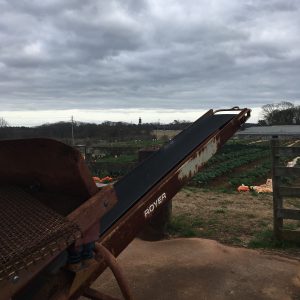What NOT to Include in Compost (Allaina Siler, Ku Kim, Delaney Williams)
What you CAN’T compost:
- Meat (and anything that came in contact with meat), dairy and bones
- Animal products such as meat have the potential for carrying diseases, and they could potentially attract rodents.
- Fats and oils (such as peanut oil, canola/ vegetable oil, etc)
- The oils may attract pests and rodents
- Walnuts
- Contain juglone, a compound toxic to some plants
- Eggs and dairy products
- Attract pests
- Cigarette butts
- Made of plastic
- Store bought shampoos/soaps
- Chemicals and dyes contaminate the compost
- Baked goods
- Due to their oils that would attract pests such as rodents and ants
- Human and animal Feces
- Due to harmful bacteria and the possibility of parasites and infectious diseases
- Specific types of water:
- Soapy water from baths/showers or washing cars
- Dishwater from washing up
- Washing machine waste water
- Waste water from the toilet
- Flood water
- Water contaminated with bleach or other cleaning agents
- Water contaminated with petrol or oils
- Rice
- Attracts unwanted bacteria and pests
- Anything made of inorganic material: polyester, rubber, acrylic, plastic
- Take a very long time to compost
- Bits of clothing
- They contain dyes and chemicals that would be harmful
- Baked beans
- Worms which might help with decomposition don’t like baked beans, they shouldn’t be included
- Specific types of paper
- Glossy or coated paper (that are treated with chemicals)
- Colored paper
- Dryer lint and contents from vacuum cleaner
- Contaminate compost
- Personal hygiene products: tampons, feminine napkins
- Potential health risk with bacteria
- Tea and Coffee Bags
- While tea leaves and ground coffee can be composted, their bags shouldn’t be in the pile, as they have harmful chemicals and are difficult to decompose.
_________________________
Comments:
The main message was clearly what could not be composted
A little more variance in the bullets would make the post more easily readable – I can see that this was done in the editing screen but does not show up in the post itself. Maybe instead the main points should be bolded, or not bulleted at all, with the minor points bulleted, or switched to the numerical outline-style bullets
The purpose is to explain to prospective composters what of their detritus must be disposed of in ways other than by composting
There doesn’t seem to be anything that needs cutting, other than perhaps moving the authors’ names to somewhere else on the page rather than in massive font that sits in the drop down menu as well as the post
Title – Improper Compostents? (components/compostents) or maybe Don’t Soil Your Soil


